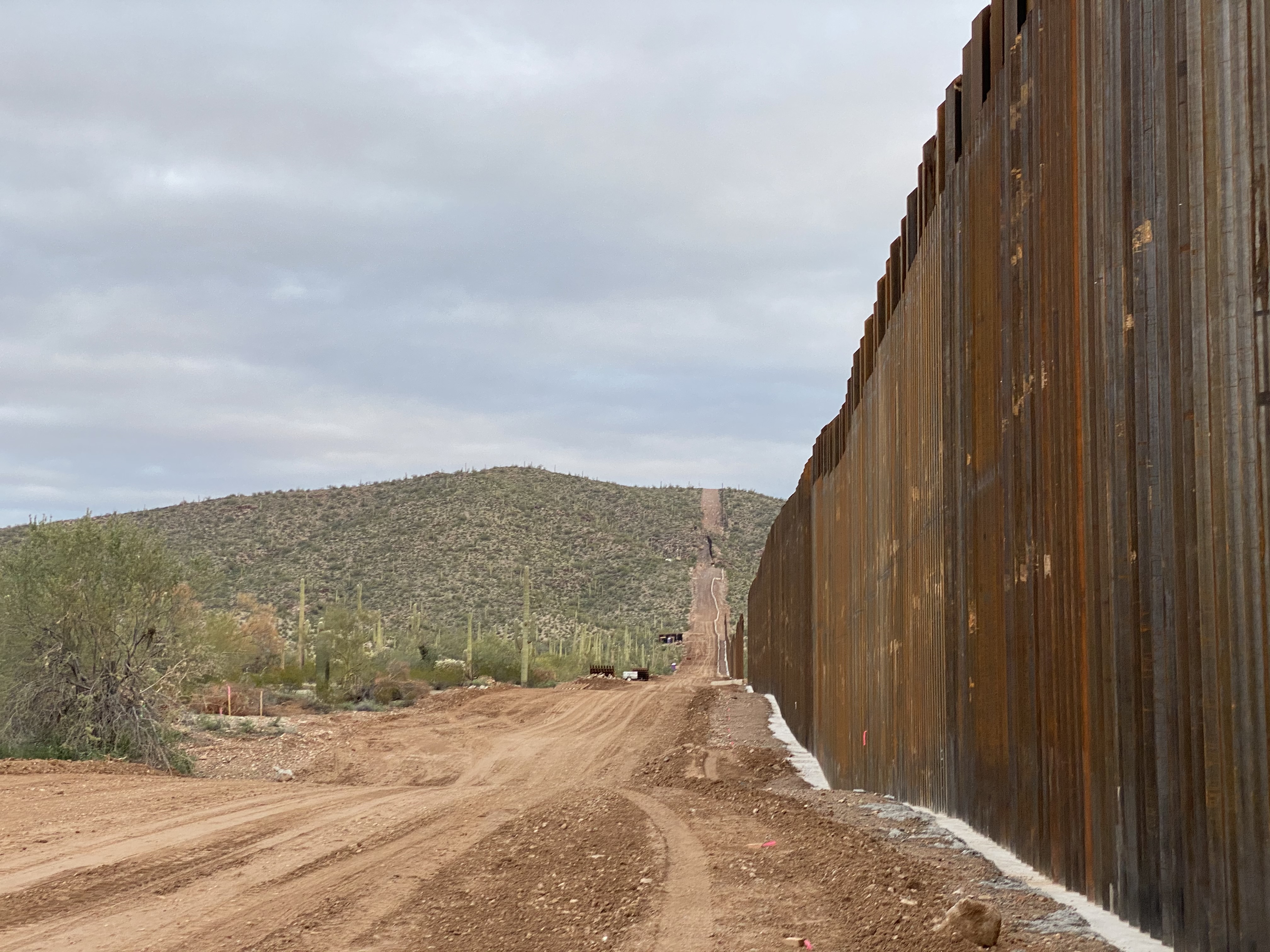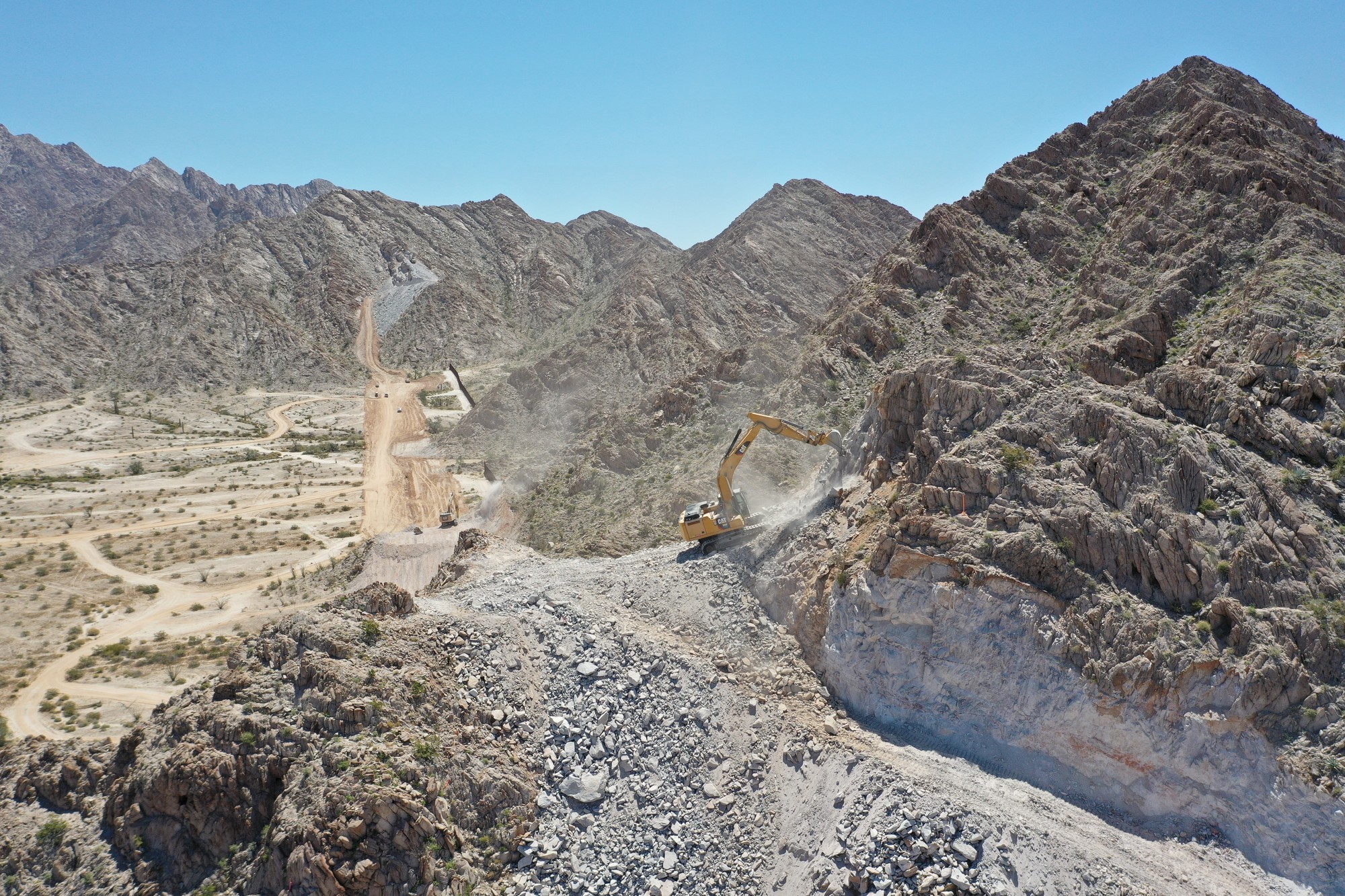
Barrier construction along the United States’ southern border has damaged sensitive ecosystems, public lands and Indigenous cultural sites, a report by a nonpartisan government research agency has found.
Released to the public on Thursday, the 72-page report marks the first independent effort from the Government Accountability Office (GAO) to assess the destruction caused by building the border wall.
It describes government contractors “blasting” a sacred Indigenous burial with explosives and leaving a mountainside “in danger of collapse”, among other incidents of harm.
The report focuses on a period from 2017 through January 2021, during the administration of former President Donald Trump. While the document never mentions Trump by name, it explains that federal authorities at the time relied on national security provisions to bypass existing protections.
“Federal agencies built about 450 miles [724 kilometres] of barriers along the US southwest border. To expedite construction, they waived federal environmental and other laws,” the GAO said in its summary.
“The construction harmed some cultural and natural resources, for example, by blasting at a tribal burial site and altering water flows.”
BREAKING: @USGAO report details severe harm caused by border wall construction. Report confirms that Trump's wall permanently altered wildlife migrations, pushed endangered species closer to extinction & dynamited Indigenous sacred sites & burial grounds.https://t.co/Xmv6GueSkA
— Laiken Jordahl (@LaikenJordahl) September 7, 2023
The report is the most comprehensive study yet of the border wall’s adverse impacts. It comes as immigration remains a flashpoint in US politics, particularly with the 2024 presidential election on the horizon.
“This report lays bare the damage the wall has inflicted on wildlife, public lands, and Indigenous cultural sites,” Laiken Jordahl, a southwest conservation advocate with the Center for Biological Diversity, told Al Jazeera.
“This report by a nonpartisan, fact-based agency confirms what we have been raising alarm over for years.”
Trump made the promise of an imposing wall on the US-Mexico border a centrepiece of his 2016 presidential campaign, which frequently leaned into anti-immigrant rhetoric and portrayed migrants as sources of crime and violence.
Chants of “Build the wall” became a staple of Trump’s campaign rallies.
Those cries are part of a growing international trend. Over the last two decades, the number of border barriers has been on the rise, with countries like the Dominican Republic, Poland and India taking steps to erect or complete fences and walls.
The Migration Policy Institute estimates that, as of 2022, 74 border barriers existed across the globe, compared with less than a dozen at the end of the Cold War.
However, the GAO report suggests steep consequences for environmental and cultural resources if construction is not evaluated beforehand.
“Before building, the Department of Homeland Security [DHS] assessed some potential effects of the construction,” the report’s website said. “But federal officials and stakeholders said they didn’t get enough information from DHS to give meaningful input.”
Construction efforts were complicated by the geography of the US’s southern border: Many sections run through rugged and inhospitable territory, including deserts, mountains and even coastal beaches.

To expedite construction through these landscapes, the Trump administration relied on the 2005 Real ID Act, which allows the government to waive laws and regulations that might pose an impediment to border walls and roads.
While previous administrations had invoked the Real ID Act, the Trump administration did so with unprecedented zeal, utilising it between 25 and 30 times, compare with just five during the Bush administration.
The Trump administration also declared undocumented crossings at the southern border a national emergency, empowering the government to overrule existing laws in the name of national security.
“The Trump administration cast those laws aside and ploughed forward with no thought about the consequences,” Jordahl said.
That authority allowed the government to overrule concerns from Indigenous communities in areas where the government wanted to move forward with construction, such as an oasis with sacred value to the Tohono O’odham Nation in Arizona known as Quitobaquito Springs.
“Since O’odham ancestors inhabited the area for thousands of years, it is home to several O’odham burial sites,” the report reads.
“According to Tohono O’odham Nation officials, contractors cleared a large area near the springs, destroying a burial site that the tribe had sought to protect.”
Ultimately, Trump completed 737km (458 miles) of border construction, though much of it overlapped with existing barriers. The GAO found 81 percent of the Trump wall replaced barriers erected under predecessors like former President George W Bush, rather than breaking new ground.
During his presidential campaign, current President Joe Biden promised to put an end to border wall construction, saying that “not another foot” would be built during his time in office.

Biden halted construction upon taking office in January 2021. However, the GAO report offered a warning about suspending all resources to the border wall area: “Pausing construction and cancelling contracts also paused restoration work — such as completing water drainage structures and reseeding disturbed areas with native vegetation.”
Jordahl, meanwhile, believes that reversing the damage will require going even further.
“Ultimately, we want to see this wall removed from sensitive ecosystems where there has been damage to wildlife,” he said.







